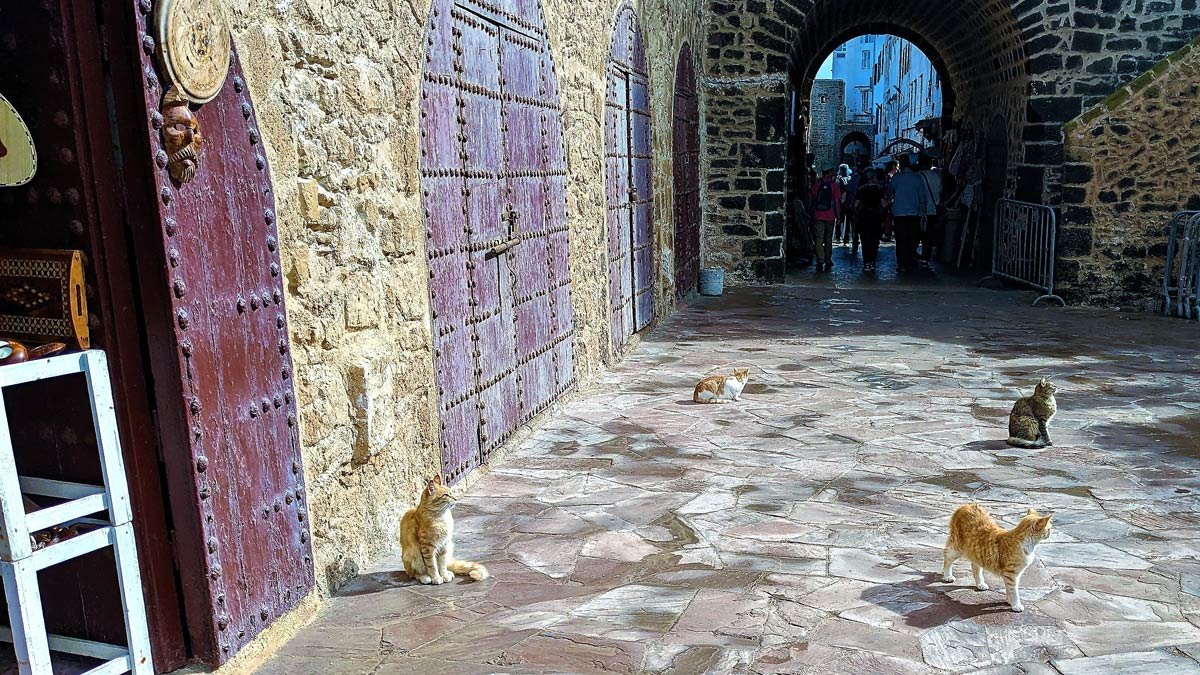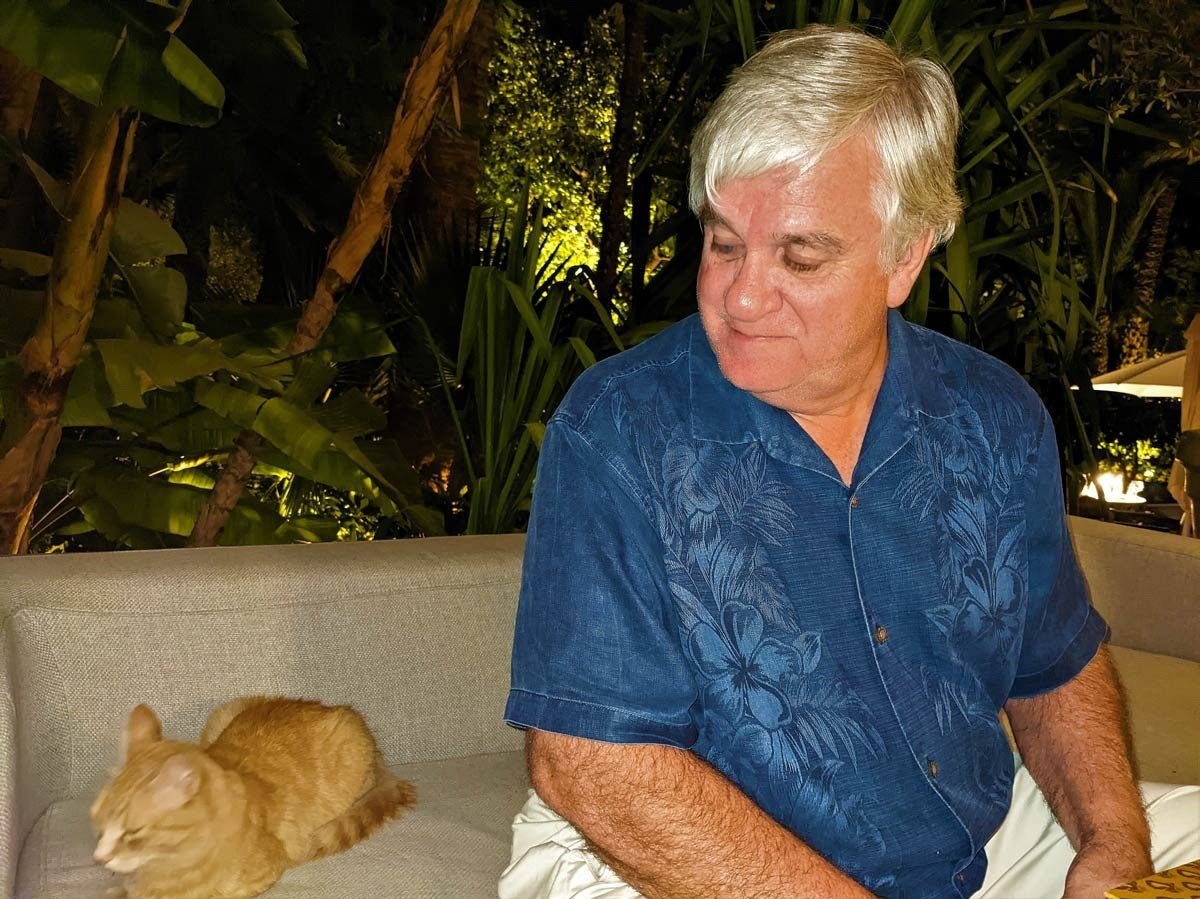Thousands of Cats Create An Animal Kingdom In Waterfront City of Essaouria - Essaouria, Morocco
What is It- Essaouria is one of the most popular destinations for visitors to Morocco seeking a relaxing place on the Atlantic Ocean. This beautifully designed city allows people to see a historic fort often used as a movie location, observe the port’s colorful fishing fleet, browse the souks and wide alleyways of the medina, and dine casually at fish stalls or formally in fancy restaurants. The layout and people are only part of the charm of Essaouria. It is also known as the city of cats since an estimated 3,000 felines populate the corridors, shops and wharves of the old city.
Local history is unclear as to when and how cats infiltrated Essaouria and took control of city affairs. However, they have established an animal kingdom that includes the shops, hotels, waterfront and green space of the community. When you walk down a street in the medina during the day, it is common to see cats in places of prominence. There are always one or two cats perched in the doorway of a store, hovering around the entrance to a restaurant, or lying in the shade of a vendor's ice cream cart. They also dart in and out of the bushes and abandoned buildings of the medina. Sometimes large groups of a dozen or more cats will congregate in one place.
I observed several things about the world of these "city cats" of Morocco. First, almost all of them are tan, tan and white, or grey in color. I don't recall seeing any black cats. In many parts of the Arab world, black cats are looked upon as a bad omen so this superstition may have been a factor in favoring light color cats. Second, cats are an accepted part of the environment and local people put out water for them and sometmes food. However, they are not considered domestic animals or allowed to live inside the house as pets. That is the case with dogs in Morocco even more so. Dogs are generally used for security and live outside in the yard. Third, it is the tourists that treat the cats as celebrities by looking at them, taking their pictures and fawning over them.
The cat kingdom of Essaouria has a class structure in the sense that the cats outside the walls of the medina around the port appear to be more feral and less healthy. The "port cats" have a more difficult life. They live on the docks under the old boats, fishing nets and fish processing buildings. Hundreds of blue painted fishing boats dock in Essaouria along with some larger trawlers. The fishermen bring their catches right onto the shore every day. Large fish, shrimp, sardines, and lobsters are cut up and displayed on fish stalls, then cooked up for local customers in tent restaurants or shipped out for the domestic market. This area is chaotic with trucks, carts, and crowds of sellers, buyers and tourists. In the middle are cats and seagulls looking for an opportunity to steal a fish carcass or some other food prize.
In recent years, local animal advocates and European residents living around Essaouria became concerned about the weak, dehydrated and underweight condition of many cats in Essaouria. They launched an effort to create a more sustainable and healthy cat population by establishing several charities. One charity rounds up cats and helps them through sterilization, vaccination and treatment of injuries. Treated cats receive a small clip on their ear so they can be identified as healthy animals. Another group has set up small cat shelters for street cats to "live" in temporarily and receive additional water and food. The health of the cat community weakened during COVID because of the reduction in tourism, but progress is being made once again now to improve conditions for the cats. Cats will remain an important part of outdoor life in Essaouria for years to come.
Interesting Facts- Over the centuries, many different groups have coveted the strategic location of Essaouria and the surrounding islands, which area is also known as Mogador. At various times, everyone from the Phoenicians and the Romans to Portuguese traders and French colonialists have inhabited the area. But it was an Alaouite Sultan Sidi Mohamed ben Abdellah of Morocco who built fortifications and the existing port there in the 1700s to create a meeting place for commerce and cultural exchanges among Berbers, Arabs, Jews and European traders. Essaouria remained a prominent commercial port for generations but has now become a leading tourist destination.
How to Get Here- Essaouria can be reached by modern highways from three of Morocco's major airports. It is about a five hour drive from Casablanca in the north, a two and half hour drive from Marrakech to the east, and a three hour drive from Agadir to the south. Day trips to Essaouria are a popular excursion from Marrakech for visitors looking to experience Essaouria's unique features and see the Atlantic.
When to Go- Essaouira has mild temperatures throughout the year and little rainfall. There are high temperatures in the 70s from May to November and in the 60s during the rest of the year. Strong ocean winds blow along the shore on some days, but within the medina there are high walls and plenty of shade which keeps things comfortable for people and cats.






